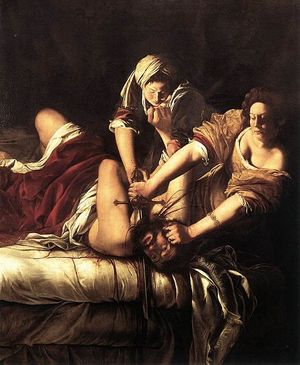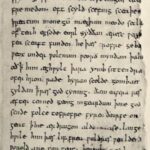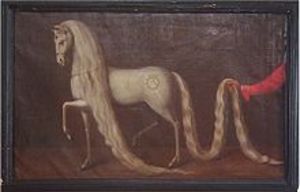Most modern printings of the King James Version (or Authorized Version) of the Bible omit fourteen books that were included as the Apocrypha when the King James Version (also known as the Authorized Version) first appeared in 1611. Roman Catholics include eleven of those books in their versions of the Bible, and other Christian groups give the Apocrypha various levels of regard, as you can read in my article on the Book of Tobit (link at end of article).
Another book of the Apocrypha, missing from most modern Protestant versions of the Bible, is the book of Judith, which tells the story of a young widow, who saves her town, Bethulia. She attracts the attention of Holofernes, the leader of the Assyrians, who are besieging her town. Judith gains his trust, but when he drinks too much and passes out, she cuts off his head. The Assyrians flee, and the siege of Bethulia is over.
The Book of Judith, like other books of the Apocrypha, is no longer found in the original Hebrew versions, only in Greek translations. Scholars say that there are phrases in the Greek that sound as if they were originally written in Hebrew, even though the Hebrew version no longer exists.
Judith is an intriguing person. Delilah, a gentile woman, led to the death of the Jewish hero Samson (Judges 16). Judith, on the other hand, is a Jewish woman (her name means Jewess) who kills the gentile hero Holofernes. Both women reveal a recurring Old Testament prejudice against women, who rely on outright deceit to accomplish their goals, even noble ones. Rachel, for example, in chapter 31 of Genesis, steals her father’s household idols, then, sits on them and says that she cannot stand up (when her father is searching for them) because she is menstruating.
Nonetheless, over the centuries, Judith has been regarded as a heroine, perhaps even with a feminist touch, since Wikipedia reports that “Judith was one of the virtuous women … mentioned in … (a 1639 argument) for the superiority of women to men,” and Artemisia Gentileschi, one of the first recognized women painters, painted Judith (illustrating this article). According to the Encyclopedia Judaica, “Judith has attracted more writers, artists, and composers than any other figure in the Apocrypha” and lists more than a column of closely printed titles of musical compositions alone, while Wikipedia provides an online gallery with the article on Judith and Holofernes (below).
If you you read the Book of Judith, do so with pleasure, and with an open mind, not to challenge your tradition but to enrich your experience. There is nothing wrong with the books of the Apocrypha. Because of their history, they just do not meet the standards of the canon (the definitive text of the Bible) of some traditions.
You can read at least four translations of the Book of Judith online. The Protestant King James Version and Revised Standard Version (modern) of Judith can be found at http://www.ccel.org/wwsb/Judith/index.html. For Roman Catholics, the Douay-Rheims version can be found at http://www.drbo.org/book/18.htm, and the New Jerusalem (modern) version of Judith is at http://www.catholic.org/bible/book.php?id=18.
For more information:
My article on the Book of Tobit – http://www.associatedcontent.com/article/830121/whats_missing_from_your_bible_the_book.html
Wikipedia article on Judith and Holofernes – http://en.wikipedia.org/wiki/Judith_and_Holofernes
Wikipedia article on Artemeisa Gentileschi – http://en.wikipedia.org/wiki/Artemisia_Gentileschi
Wikipedia article on the Jewish Apocrypha at http://en.wikipedia.org/wiki/Jewish_apocrypha
Wikipedia article on the Christian Apocrphya at http://en.wikipedia.org/wiki/Biblical_apocrypha
Roman Catholic commentary at http://www.newadvent.org/cathen/01601a.htm




